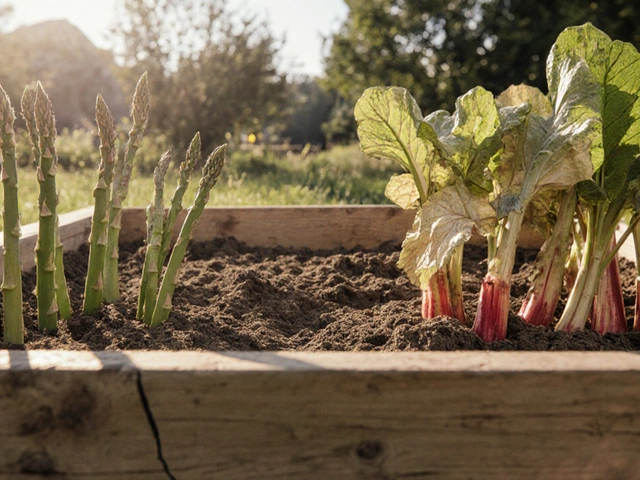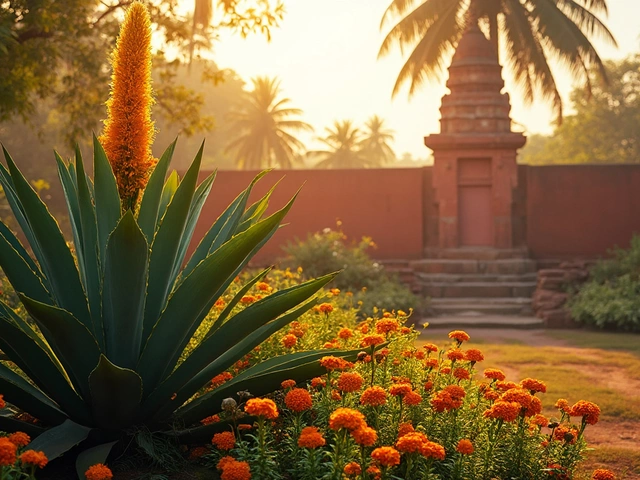Lotus Flower: How to Grow, Care for & Appreciate This Sacred Bloom
Ever wondered why the lotus looks so pure even when it sits in muddy water? That contrast is the reason it’s loved across India—from temples to backyard ponds. The good news is you don’t need a fancy garden to enjoy it. With the right spot and a few simple steps, you can have a thriving lotus that blooms every summer.
Ideal Conditions for Lotus in Indian Gardens
Lotus loves warm water and sunshine. In most parts of India, water temperatures above 20°C (68°F) are perfect, so plan to plant after the last frost, typically in March or April. A shallow pond or a large container that can hold at least 12‑18 inches of water works well. The water should be still; even a small windbreak can keep the surface calm.
Soil is another key factor. Use heavy clay or loam that can hold moisture without washing away. A common mix is one part garden soil, one part compost, and a handful of sand to improve drainage. Avoid light topsoil because it will float and the tuber may drown.
Sunlight drives the big, showy flowers. Aim for at least six hours of direct sun each day. If you only have a partly shaded spot, choose a lotus variety that tolerates some shade, like Nelumbo nucifera ‘Perry’s White’.
Practical Growing Steps and Common Issues
Start with a healthy tuber or seed pod from a reputable supplier. Plant the tuber upright in a basket or a woven pot, covering it with about an inch of soil. Submerge the basket in your pond or container, making sure the water level is high enough to cover the tuber but not so deep that it drowns—12‑15 inches is ideal.
Keep the water level steady. Lotus will push its leaves upward, and as they grow, you may need to add more water to keep the roots submerged. In hot summer months, water can evaporate quickly, so check the level daily.
Fertilize lightly once the first leaves appear. Use a low‑nitrogen, high‑phosphorus fertilizer designed for aquatic plants. Apply it in small doses—over‑feeding will cause algae blooms, which cloud the water and hinder growth.
Watch for pests like snails and aphids. A quick rinse with water or a handful of crushed eggshells can deter snails. If aphids appear, spray a mild soap solution (one teaspoon of liquid soap per gallon of water) and rinse after a few minutes.
Harvest the seeds for next season’s planting. After the flowers fade, let the seed heads dry on the plant. Once they turn brown, collect them and store in a cool, dry place. You can re‑plant them the following spring for a fresh batch of lotus.
Finally, remember that lotus spreads by runners, so if you want to keep it contained, trim the new shoots regularly. This also encourages bigger blooms on the main plant.
With these straightforward steps, you’ll have a lotus pond that not only looks stunning but also carries the spiritual calm that has made the flower a symbol of purity for centuries. Enjoy the sight of sunrise‑colored blossoms opening on calm water, and let the lotus become the quiet centerpiece of your garden.
Lotus Lifespan: How Long Does a Lotus Really Live?
Curious about how long a lotus lives? This article breaks down everything you need to know about the lotus lifespan, straight from gardening experience in India. You’ll get insights on how long these flowers bloom, what affects their life, and tips to make them last longer in your pond or pot. Get ready to learn plenty of practical tips about growing and keeping lotus thriving in your home garden. Perfect for anyone wanting beautiful lotus flowers year after year.
About
Flower Gardening
Latest Posts


Vegetables That Grow Well Next to Each Other: Smart Pairings for a Healthy Garden
By Alden Thorne May 13, 2025

Plants That Struggle in Raised Beds - What to Avoid
By Alden Thorne Oct 8, 2025

Best Garden Tools: What's a Good Gift for a Gardener?
By Alden Thorne Apr 28, 2025

